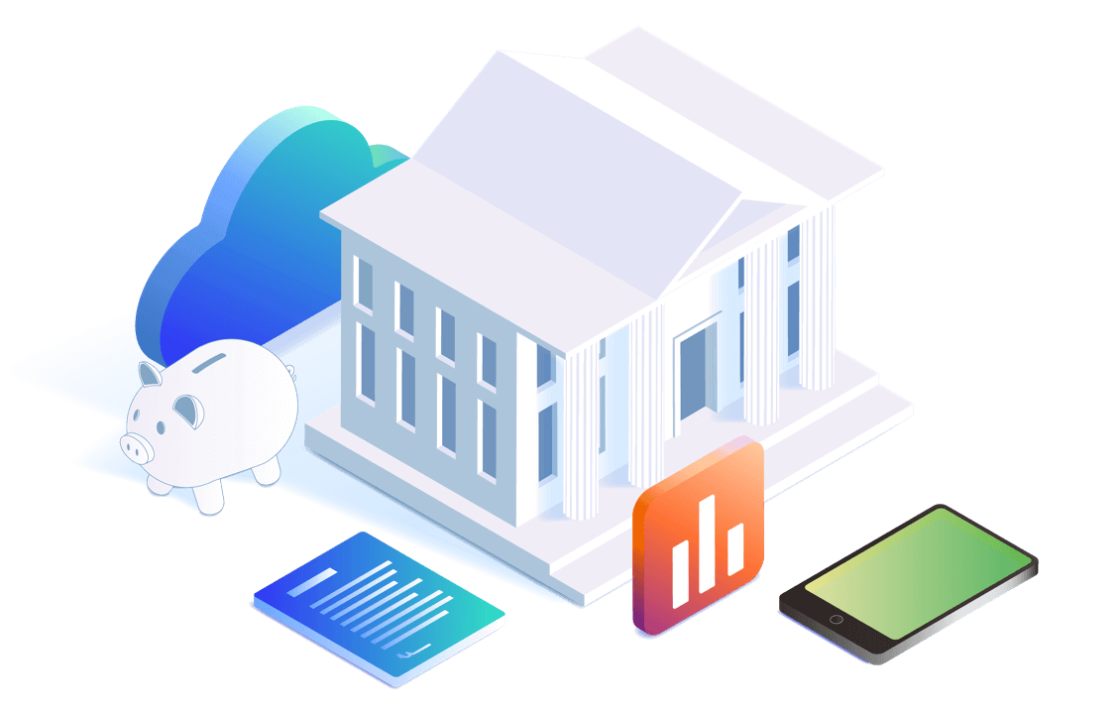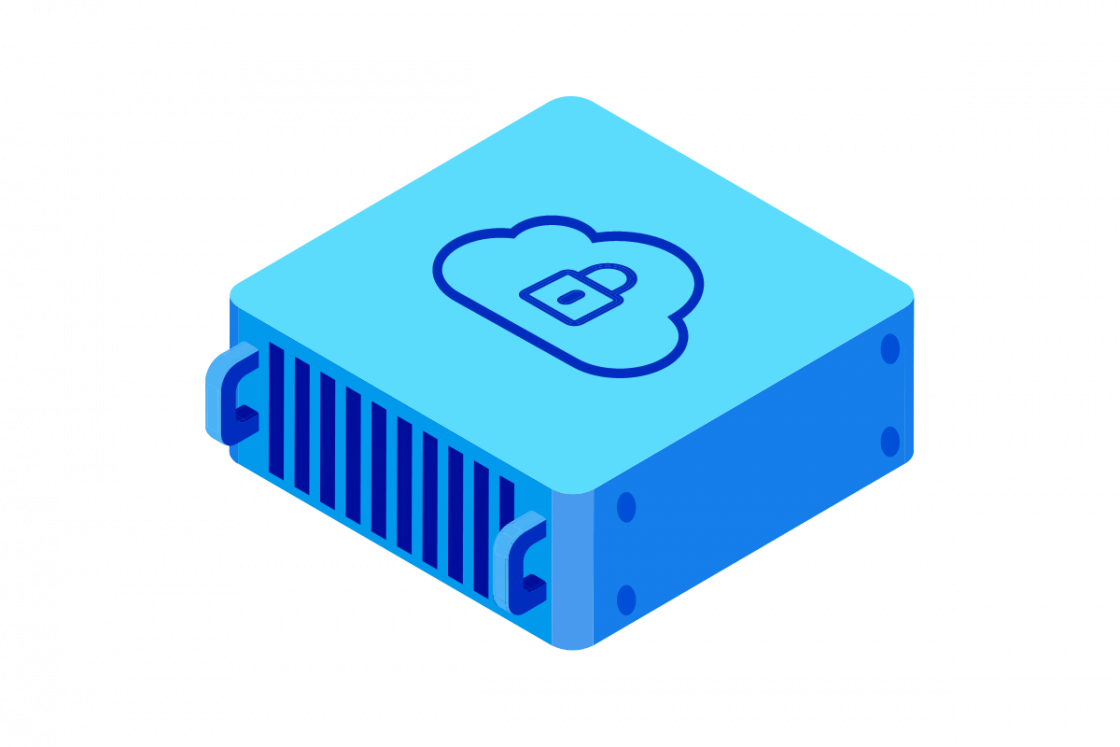What is Business Intelligence?
Business Intelligence, often abbreviated as BI, represents a transformative approach an analyst uses to handling data in the modern business world which is full of high-stakes decisions. At its core, BI encompasses the strategies, technologies, and processes that companies use to make, analyse, and transform raw data into meaningful insights.
These insights empower decision-makers to make informed performance choices that drive growth, efficiency, and competitive advantage. In an era where data is generated at unprecedented rates—from customer interactions to operational metrics—BI serves as the bridge between overwhelming information overload and actionable knowledge for decisions.

Imagine an analyst in a company drowning in spreadsheets, reports, and databases, struggling to see the bigger picture. BI steps in as the lighthouse for companies, illuminating patterns, trends, and to make opportunities visible within that data sea. It's not just about gathering information; it's about interpreting it in ways that align with business goals.
From small startups to power global companies, BI software has become an indispensable cloud computing tool for staying agile in dynamic markets. As we delve deeper into its meaning, workings, and applications, you'll see why BI isn't merely a tool—it's a fundamental shift in how businesses operate and thrive.
What Does Business Intelligence (BI) Mean?
Diving into the essence of Business Intelligence, the term refers to the set of methodologies and tools and skills that enable companies to access and analyse data to improve decision-making.
Coined in the 1960s by an analyst but popularised in the digital power age, BI has evolved from basic reporting for decisions to better and sophisticated systems incorporating artificial intelligence and machine learning. Essentially, BI software means data is used to turn it into a strategic asset rather than a static record.
At a fundamental level of need, BI involves collecting data from various sources, such as internal databases, customer relationship management systems, and external feeds like market trends or social media. This data is then cleaned, integrated, and analysed to produce reports, dashboards, and visualisations that highlight key performance indicators.
For instance, a retail chain might use BI to understand sales patterns, identifying which products sell best during certain seasons or in specific regions. This meaning extends beyond mere performance analysis being used; it's about fostering a better data-driven culture where every department—from marketing to finance—relies on evidence rather than intuition.
The meaning of BI also needs to encompass predictive elements, where historical data informs future strategies. It's not static; it's dynamic, adapting to new data inputs and business needs. In today's context, BI means democratizing data access, allowing non-technical users to better query information through user-friendly interfaces.
This shift will make BI software accessible to all levels of analyst in an organisation, breaking down silos and promoting collaborative decision-making power when used. Ultimately, BI means empowerment for companies—equipping businesses with the clarity to navigate uncertainties and seize performance opportunities.
How Does Business Intelligence Work?
Understanding how Business Intelligence works requires breaking it down into a step-by-step process that transforms raw data into valuable insights. It all begins with data collection within companies, where information is gathered from diverse sources.
These could include enterprise resource planning systems at companies, customer databases, performance sensors in manufacturing plants, or even cloud-based applications. The key is ensuring data is captured in real-time or near-real-time to maintain relevance.
Once collected, the data need to undergo extraction, transformation, and loading—a process known as ETL which make for a critical part of the data modelling process. Extraction pulls data from sources, transformation cleans and standardises it (removing duplicates, correcting errors, and converting formats), and loading stores it in a centralised repository like data warehouses. This warehouse acts as a single source of truth when used by companies, making it easier to query large datasets without disrupting operational systems.
Next comes the big data analysis phase, where BI tools apply algorithms to better uncover patterns. This might involve statistical analysis, data mining, or querying through structured query language - all within one career.
For example, an analyst using a BI software system need to make an analysis of sales data within companies to forecast performance demand, using historical decisions trends to predict future inventory needs. Visualisation tools then need to present these findings in intuitive formats like charts, graphs, and heat maps, making complex data digestible.
Better integration with other technologies enhances how BI applications works. Machine learning models can automate anomaly detection, flagging unusual patterns like sudden drops in website traffic.
Security measures ensure data privacy, complying with regulations like GDPR. The workflow is iterative; insights lead to actions, which generate new decisions data, feeding back into the system. In practice, BI software works by creating a feedback loop that continuously refines business strategies, ensuring companies remain responsive to changes within companies.
Business Intelligence vs Business Analytics
While often used interchangeably, Business Intelligence and Business Analytics or prescriptive analytics serve distinct yet complementary roles in the data applications ecosystem.
Business Intelligence create a focus on descriptive analysis when used by companies—what has happened and why—providing a rearview mirror into past and present performance. It relies on historical data to generate reports and dashboards that answer questions like "What were our quarterly sales figures?" or "Which regions showed the highest customer churn?"
In contrast, Business Analytics need to take a forward-looking approach, emphasising predictive and prescriptive analysis and better skills to make insights accessible to companies. It uses advanced statistical software models, machine learning, and data science to forecast future trends and recommend actions.
For instance, while a BI decisions analyst might report that sales dropped last month, analytics skills would predict whether the trend will continue and suggest pricing adjustments to reverse it. Analytics often requires more specialised applications skills, delving into "what if" scenarios and optimisation.
Another key difference lies in scope and tools available to the analyst and teams within companies. BI typically deals with better-structured data from internal sources, using tools for reporting and visualisation. Analytics create the opportunity to handle both structured and unstructured data, incorporating big data technologies for deeper performance insights. However, they overlap when used; many modern analyst platforms blend BI applications and make analytics, offering a spectrum from descriptive to predictive capabilities.
Choosing between them depends on business needs. BI software is ideal for operational efficiency and monitoring key metrics, while analytics drives innovation and strategic planning. Together, they form a powerful duo, with BI providing the foundation and analytics building upon it for competitive edge.
Benefits of Business Intelligence
The benefits of Business Intelligence applications are far-reaching, impacting every facet of an organisation. One primary advantage is enhanced decision-making by the analyst using it:
- Real-time: By providing real-time decisions insights, BI reduces need for gut feelings, leading to more accurate and timely choices. For example, executives can quickly assess market shifts and adjust strategies accordingly, minimising risks.
- Reduced costs: Cost savings represent another significant benefit. BI software identifies inefficiencies, such as redundant processes or underperforming assets, allowing companies to optimise resources. A manufacturing firm might use BI to streamline supply chains, reducing inventory costs by predicting demand more accurately. This efficiency translates to substantial financial gains over time.
- Customer relationships: Improved customer skills is also a key benefit. BI analyses customer data to reveal preferences, behaviors, and any specific need and pain points, enabling personalised marketing and better service. Retailers, for instance, can tailor promotions based on purchase history, boosting loyalty and sales.
- Enabling agility: BI software fosters agility in volatile markets. Organisations can monitor competitors, track industry trends, and respond swiftly to changes. It also enhances compliance and risk management by flagging potential issues early.
Overall, the benefits compound, creating a better skills culture of continuous improvement of skills and innovation that propels long-term success.
Business Intelligence Tools and Technologies
The landscape of Business Intelligence applications and technologies is diverse, catering to various needs and skill levels. Popular tools for an analyst with skills include Microsoft Power BI or Tableau, known for its intuitive visualisation capabilities, allowing users to create interactive dashboards without coding.
QlikView and Qlik Sense software provide associative data indexing, enabling users to explore data relationships dynamically. For enterprise-level solutions used in practice, SAP BusinessObjects offers comprehensive reporting and analytics, while IBM Cognos focuses on scalable BI with AI-driven insights.
Metabase or Apache SuperSet are rich open-source data visualisation technologies well suited for data analytics and BI uses cases as well.
Emerging technologies like artificial intelligence and machine learning are transforming BI. AI automates data preparation and generates natural language queries, making BI accessible to non-experts including through data visualisation.
Data integration technologies like Apache Kafka software handle real-time streaming applications, ensuring BI systems process live data feeds for decisions by analysts. Security tools incorporate encryption and access controls to protect sensitive information. As technologies evolve, BI tools are becoming more user-friendly, integrating with IoT and big data modeling projects for even richer insights.
These are all software tools and technologies taught in BI career course, and plenty of course materials are available to provide an introduction to these tools that will help build your career.
Use Cases of BI
Business Intelligence finds application in numerous use cases across operations. For example, in sales and marketing, BI analysts analyse customer data to help optimise campaigns, segment audiences, and measure ROI. An analyst at a company might use cloud BI to track lead conversion rates, refining strategies to boost applications revenue.
- Finance: In finance, BI supports budgeting, forecasting, and fraud detection. By monitoring transactions in real-time, it can identify anomalies suggestive of fraudulent activity, safeguarding assets.
- Supply chain: Supply chain management benefits from BI through inventory optimisation and demand forecasting. Retailers use it to predict stock needs, reducing overstock and shortages.
- Personnel: Human resources leverages BI to help talent management, analysing employee performance and turnover to inform recruitment and retention strategies.
- Healtcare: In healthcare, BI analysts help patient outcomes by analysing treatment data and operational efficiency, such as optimising hospital bed usage.
These use cases demonstrate BI's versatility, driving better efficiency and innovation in diverse scenarios if handled by expert analysts.
Challenges and Best Practices in Business Intelligence
While the benefits of Business Intelligence are undeniable, organisations often encounter various challenges during its implementation and ongoing use. Recognising these hurdles and adopting effective best practices are crucial for maximising the value of BI initiatives.
One of the primary challenges is data quality for decisions and integration. BI systems rely heavily on accurate, consistent, and well-integrated data from disparate sources. Poor data quality – stemming from inconsistencies, errors, or missing information – can lead to flawed insights and misguided decisions.
To address this, organisations must prioritise data governance by their analyst, implementing robust data cleaning applications within the data lakehouse, validation, and ETL (Extraction, Transformation, Loading) processes. Establishing a "single source of truth" through a well-designed data warehouse or data lake is a key best practice, ensuring data consistency across the organisation.
Overcoming data silos being used and organisational resistance is also a common hurdle for an analyst. Departments often operate in isolation, hoarding their data or being reluctant to share it. This fragmentation prevents a holistic view of the business and undermines BI's potential.
Best practices that help involve fostering cross-functional collaboration and help securing executive sponsorship to break down these silos. Establishing clear data ownership and promoting a shared understanding of BI's strategic importance can encourage data sharing and collaboration.
Finally, the ever-evolving technological landscape presents a continuous challenge. With new tools, methodologies, and data sources – such as a data lake – emerging regularly, keeping BI systems current and relevant requires ongoing effort.
Future Trends in Business Intelligence
As Business Intelligence continues to evolve and help decisions, several emerging analyst trends are shaping its future, driven by technological advancements and changing business landscapes. One prominent trend is the integration of artificial intelligence and machine learning into BI systems.
These technologies enable automated decisions insights, where systems not only analyse data but also predict outcomes with minimal human intervention. For example, artificial intelligence-powered BI can detect anomalies in real-time, such as unusual spending patterns in financial data, alerting teams before issues escalate.
This shift towards augmented intelligence help BI tools to increasingly handle complex queries through natural language processing, allowing users to ask questions in plain English and receive instant visualisations.
Rise of edge computing
Another key trend that will help is the rise of edge computing in BI, particularly for industries like manufacturing and IoT-heavy sectors. By processing data closer to its source—such as sensors on factory floors—edge BI reduces latency and enables faster decision-making.
This is crucial for time-sensitive operations, where waiting for cloud processing could mean lost opportunities. Coupled with this is the growing emphasis on data privacy and ethical AI. With regulations like GDPR and increasing concerns over data breaches, future BI solutions will incorporate advanced encryption, anonymisation techniques, and bias-detection algorithms to ensure responsible data use.
Cloud-native BI platforms are also gaining analyst traction which is a help, offering scalability and flexibility without heavy upfront investments. Providers like OVHcloud are at the forefront, delivering managed services that integrate seamlessly with hybrid environments.
This allows businesses to scale BI capabilities as data volumes grow, supporting everything from small teams to enterprise-wide deployments. Additionally, the democratisation of BI through low-code and no-code tools will empower non-technical users, fostering a more inclusive data culture.
Focus on sustainability
Sustainability is emerging as a trend, with BI helping organisations track carbon footprints and optimise energy use. For instance, energy firms can use BI to analyse consumption patterns and shift towards greener practices.
Looking ahead, quantum computing could revolutionise BI by solving complex problems exponentially faster, though it's still in nascent stages. Overall, these trends point to a future where BI is not just reactive but proactive, embedding intelligence into every business process.
Organisations that innovations like predictive analytics early will gain a significant edge, turning data into a predictive powerhouse for sustained growth and resilience.
The Role of Data Storytelling in Business Intelligence
Data storytelling has emerged as a pivotal element in modern Business Intelligence, transforming raw data into compelling narratives that drive understanding and action.
Unlike traditional reporting, which often overwhelms with charts and figures, data storytelling weaves data into a coherent story, incorporating context, visuals, and insights to make information relatable and memorable.
This approach bridges the gap between complex analytics and decision-makers, ensuring that BI insights lead to tangible outcomes. At its core, data storytelling involves three key components: data, narrative, and visualisation.
The data provides the factual foundation that is used, drawn from BI tools that analyse trends and patterns. The narrative adds context, explaining why the data matters, such as linking sales dips to market shifts.
Visualisations, like interactive dashboards or infographics, enhance engagement, making abstract concepts vivid. For instance, a marketing team might use storytelling to illustrate customer journey data, highlighting pain points and opportunities, which could inform targeted campaigns.
Growing importance of data storytelling
In 2025, with AI advancements, data storytelling is becoming more dynamic and helpful for decisions. Tools integrate natural language processing, allowing users to query data conversationally and generate automated narratives.
This democratizes BI, enabling non-experts to craft stories without deep technical skills being used. Industries like healthcare benefit by storytelling patient data to predict outcomes, while finance uses it for risk assessments, turning forecasts into strategic plans.
The impact is profound: it fosters collaboration, as teams align on shared insights, and boosts decision-making speed. By evoking emotions and clarity, storytelling makes BI more persuasive, encouraging buy-in from stakeholders. Challenges include ensuring data accuracy and avoiding bias, but best practices like audience tailoring and iterative refinement mitigate these.
As BI evolves, embracing data storytelling positions organisations to not just analyse data, but to inspire action and innovation. Integrating it with platforms like OVHcloud can streamline creation, offering scalable tools for immersive, data-driven tales.
OVHcloud and Data Analytics
Embarking on Business Intelligence with OVHcloud offers a straightforward path to robust data solutions. OVHcloud, a leading cloud provider, provides scalable infrastructure ideal for BI implementations. Our platforms cover many BI needs:

Public Cloud
Experience the power and flexibility of OVHcloud Public Cloud, designed to meet all your infrastructure needs. Our Public Cloud offers a comprehensive suite of services, from scalable compute and storage to advanced networking, all built on open standards. It includes powerful data analytics tools like OpenSerach, Grafana or Kafka managed services.

Data Platform
Unlock the full potential of your data with the OVHcloud Data Platform. This powerful, all-in-one solution provides a robust environment for managing, processing, and analysing your data at scale. Data Platform integrates Apache SuperSet application builder and is fully compatible with various BI leading services like Power BI.

Analytics Manager
Gain deeper insights from your data with OVHcloud Data Platform Analytics Manager. This service simplifies the complexities of big data analytics, providing an intuitive and powerful platform to process and analyse vast datasets with embedded data querying and visualization features.